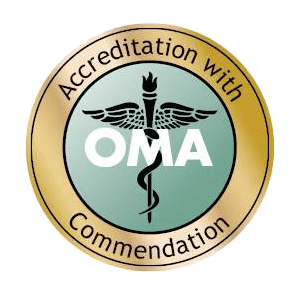At Bay Area Hospital, preventing the spread of infectious disease is a top priority, and results from statewide data show that effort is proving effective.
Since state mandatory reporting began in 2009, Bay Area Hospital has had no central line associated bloodstream infections (CLABSIs), and the number of surgical site infections following knee replacement surgeries has dropped dramatically — from seven in 2009 to four in 2010, and to none through the third quarter of 2011.
“To me, it’s a real success story,” said Katie Griffith, the hospital’s full-time infection control and prevention specialist. “Our healthcare team has implemented the evidence-based practices that have resulted in these outcomes.”
In addition to results of mandatory infection reporting and a comparison of Bay Area Hospital with other hospitals statewide and nationally, the report includes all Bay Area Hospital practices to prevent the spread of multidrug-resistant organisms such as Methicillin-resistant Staphylococcus Aureus (MRSA), Clostridium difficile (c.difficile) and Vancomycin-resistant Enterococci (VRE).
Primary among those practices are a constant attention to thorough hand washing by doctors, nurses, technicians and other staff — anyone who comes into contact with patients, explained Lori Krenos, the hospital’s chief nurse and an Infection Control Committee member.
To help, the hospital has implemented a “Speak Up” campaign, which encourages patients and co-workers to remind care providers to wash their hands before delivering care — if hand washing is not directly observed.
“The clinical staff at Bay Area Hospital has done an amazing job at empowering both each other and the patient to help focus everyone’s attention on hand washing, to minimize missed opportunities and maximize our infection control practices,” Krenos said. “I’m extremely proud of the great job they have been doing, and how focused they are at making the hospital the safest environment possible for the community.”
Additionally, the hospital uses state-of-the-art sterilization methods to ensure all equipment used in surgeries and to treat patients is germ-free. “The hospital meets or exceeds the standards for sterilization established by the Association for the Advancement of Medical Instrumentation” said Darrell Agnew, Bay Area Hospital’s materials manager. He added that the hospital recently installed new washer/disinfectors.
The hospital also follows the Centers for Disease Control and Prevention guidelines to prevent Catheter-associated Urinary Tract Infections. Since 2008, Bay Area Hospital’s rate of these catheter-associated infections has trended downward, Griffith pointed out.
“Infection is a many-headed beast, and the hospital is doing a good job on many levels to control it,” said Dr. Bill Moriarty, Bay Area Hospital’s chief medical officer and an internal medicine physician.
Moriarty explained that hospitals must report any infection that occurs in a knee replacement patient up to 12 months following surgery. He said that some infections reported by Bay Area Hospital for 2009 and 2010 didn’t occur until at least six months after the surgery.
“There are lots of ways a person could acquire an infection during that time,” he added. “So far for 2011, we’re doing extremely well. I do think we’re getting a better handle on infection control in general, due to our scrupulous attention to sterilizing techniques and to reinvigorating our hand-washing program.”














